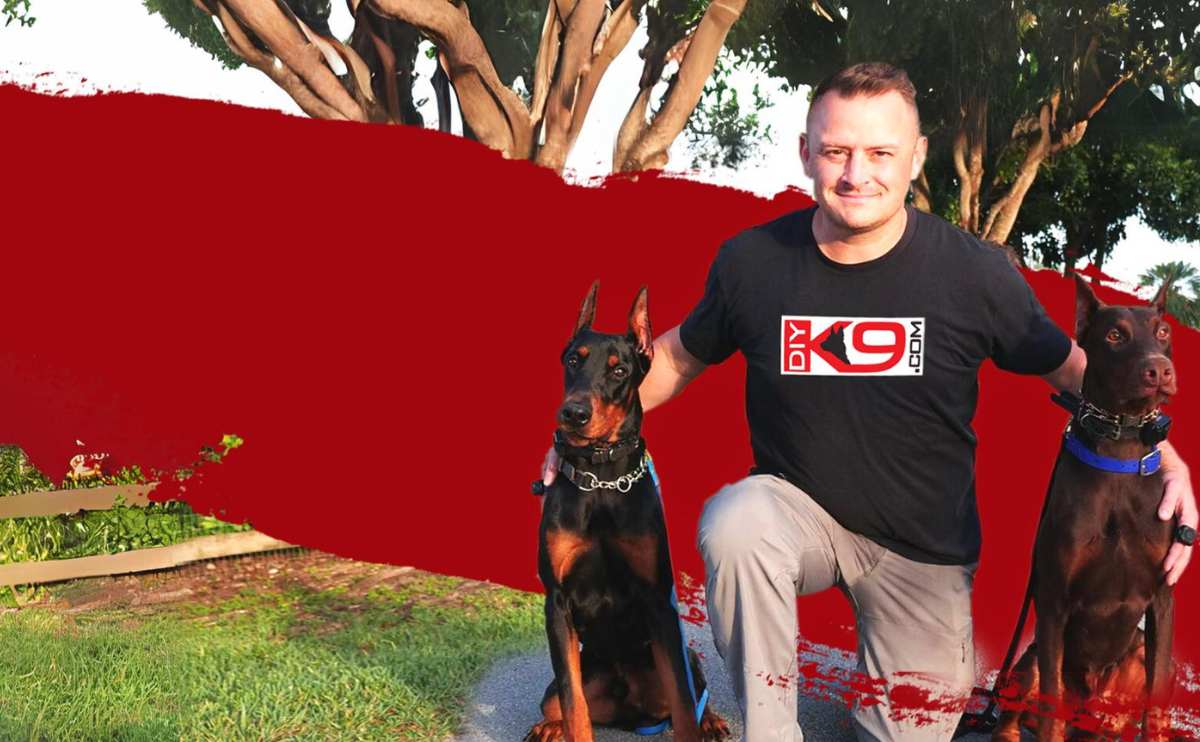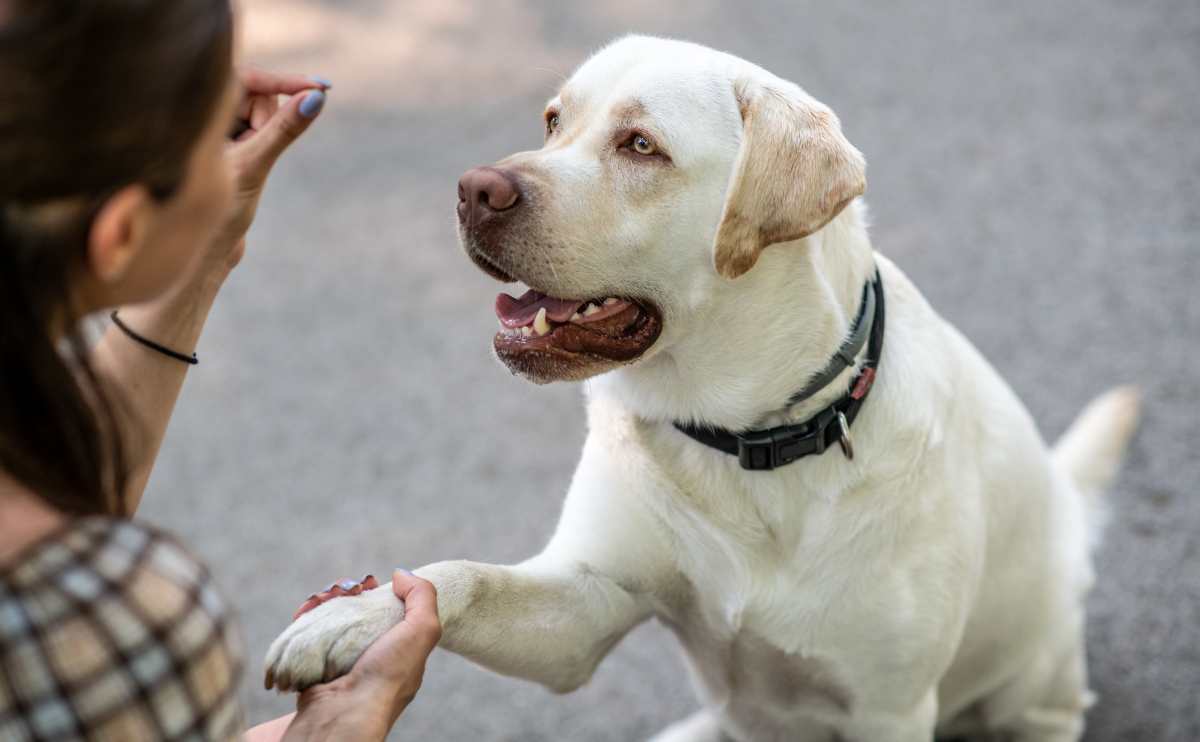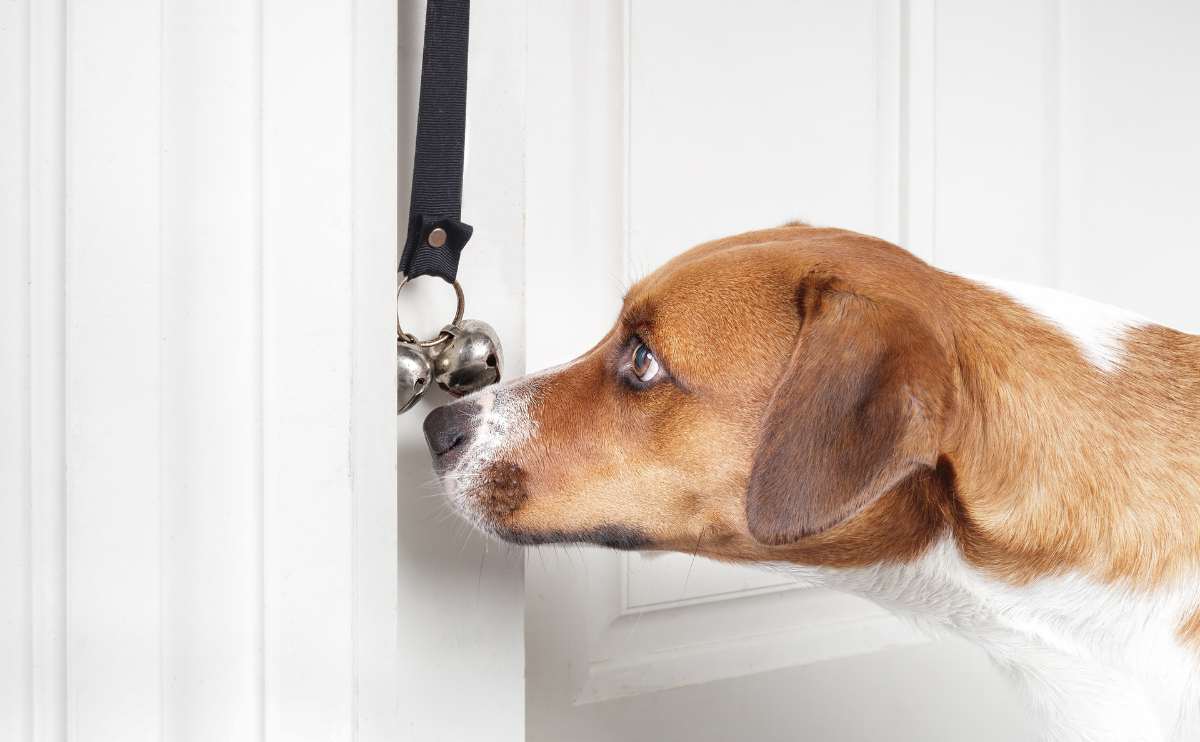When you purchase through links on our site, we may earn a commission. Here’s how it works.
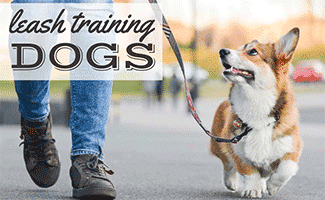
Are you wondering how to leash train your new puppy? Or perhaps you have an older rescue dog you need to train to walk on a leash. In either case, proper leash walking is an important skill to teach your pup at any age. We’ll give you step-by-step tips on how to leash train a puppy or adult dog, recommendations for the best collars and leashes, and other advice to make the process go as smoothly as possible.
Why Is Leash Training So Important?
If you’re a new dog owner, you may not realize the many benefits of dog walking training — and how not training your dog to walk on a leash early on can create ongoing problems, such as leash pulling and lunging at other dogs and people, when you’re out for walks. Some of the major benefits of leash training include:
- Safety: Good leash manners reduce the risk of your dog injuring another dog, person, or herself while walking or at other public places.
- Obedience: Leash training teaches your dog obedience and self-discipline.
- Stress-free walks: It can be a stressful and unpleasant experience for both you and your dog if she’s out of control during walks.
- Bonding: Spending time training your dog creates a stronger bond between you and your pup (as do stress-free walks).
When To Start Leash Training A Puppy
You can start leash training a puppy as early as four to six weeks of age. Puppies are ripe for learning how to behave properly, so early training is better than waiting. With that said, puppies have very short attention spans, so make sure you give your puppy lots of training breaks. Also, keep in mind that young puppies aren’t fully vaccinated, so you should restrict leash training at an early age in your yard. See below for the best way to leash train a puppy.
What You’ll Need To Get Started
- A loose leash at least 4-feet long — not a retractable leash, according to the Animal Humane Society
- A collar, harness, or head halter (a collar with a strap that fits around your dog’s muzzle)
- Dog treats
Collar vs Harness: Which Is Better For Leash Training?
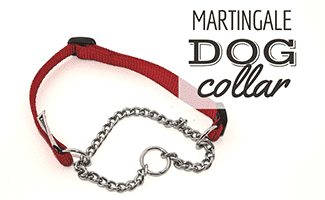
Many dog trainers recommend a standard flat collar for training young puppies. However, flat collars aren’t ideal for training dogs that pull on their leash. If your dog pulls, you’ll want to consider a Martingale collar, a head halter (e.g., Gentle Leader), or a front-clip harness (e.g., Easy Walk Harness). See our Gentle Leader vs Easy Walk Harness comparison to help you decide which might be best for your pup.
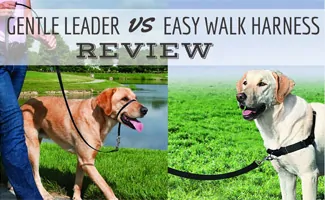
Trainers usually don’t recommend pinch, choke, or shock collars unless leash pulling is extreme — and even then, they advise only to use them for a short time. And keep in mind when choosing a harness, make sure it’s a front-clip; back-clip harnesses aren’t good for leash training.
Step-By-Step: How To Leash Train A Puppy
In addition to following the steps below on how to train a puppy to walk on a leash, the most important thing to keep in mind is that positive reinforcement, short sessions, lots of practice, and patience are key with loose-leash training. Also, start training indoors or in your backyard where there aren’t many distractions.
Step 1. Introduce The Leash And Collar
Make sure your puppy is comfortable with her leash and collar or harness before you start training. Give her lots of praise and a treat when you put the collar and leash on (she can drag the leash around the house). Repeat this several times, so your puppy associates a positive experience with the gear.
Step 2. Teach Your Pup To “Come”
Once your pup is comfortable with her collar and leash, encourage your pup to come to you with the leash and collar on, giving her a reward when she does. Repeat this if needed until your puppy understands to come to you. Then, take a few steps for your pup gets used to you holding the leash while she’s walking. If she seems reluctant, repeat this process until she gets used to it.
Step 3: Teach Your Pup To “Heel”
The goal of “heel” is for your dog to walk beside your leg without pulling forward or dropping back. This is very important to avoid future problems with leash pulling or lunging. During this process, keep the leash as short as possible because you don’t want your pup to have a lot of room to stray. Once she gets the hang of “heel,” you can start loosening the leash a bit.
- Take one step, then stop and feed your pup some treats from your hand, keeping your hand right by your side. This gets your puppy in the right position by your side.
- Repeat this process as many times as necessary using the “heel” command, so your dog begins to associate it with staying by your side.
- Once your dog stops when you stop and looks for you to give her treats, you can move on to taking two steps instead of just one.
- Repeat taking two steps, stopping, and rewarding until she catches. Then you can continue this process by slowly adding additional steps between each treat.
Quick Tips
Once your puppy is trained enough for you to take walks together, you don’t need to keep repeating the “heel” command as long as you’re sure she gets it. When it comes to potty breaks, make sure you’re paying attention to her cues that she needs to relieve herself. You can stop walking and give her more leash room to sniff around for the perfect spot.
Reward her once she’s done, but don’t offer a reward if she doesn’t urinate or defecate. This will help with dogs who linger or want to stop and sniff a lot. Another tip to help avoid stopping to smell the roses is to keep a brisk pace. Walking too slowly can give some dogs too much room for distraction.
Introducing “Off-Duty” Walking
Once your puppy has mastered heeling, you can introduce a more relaxed walk, often referred to as “off-duty” walking. This means you’re giving your dog room to change sides, stop and sniff, walk around, linger behind, etc. The key here is that pulling ahead is still not allowed. Here are some tips on working this into your pup’s walking experience.
- Choose a cue, like “okay,” “at ease,” or “free time” to tell your dog that this is a different kind of walk than a “heel” walk.
- Decide how much leash length you want to give your dog.
- Say the cue right before you start off-duty walking.
- While on your off-duty walk, follow the tips below on leash pulling if she pulls ahead.
- If you spot an oncoming person, dog, or anything that you think will make your dog pull, call her name or give her the “heel” command to get her to come to your side.
Training Your Dog Not To Pull On The Leash
Whenever your puppy pulls ahead of you during the training process — or if you have an older dog that pulls ahead — immediately stop walking. Call your pup to “heel” or come to you. With older dogs, tell them to “sit.” At first, you may need to show your dog treats to make her come back to your side until she learns the command. However, don’t give your dog a treat yet. Take a few more steps before giving her treats. This teaches your pup that pulling ahead won’t be rewarded.
How Do I Stop On-Leash Lunging? (Video)
Many dogs exhibit leash-reactive behavior — jumping or lunging at other dogs, people, bikes, cars, etc. If that’s your pup’s behavior, check out the four-minute video below to get some tips on dealing with reactive leash behavior.
Do You Need Dog Training Assistance?
If you feel like you need some professional help with leash training or other training needs, you don’t have to fork out a fortune for a professional dog trainer. Some excellent, less-expensive options include online dog training courses and dog training mobile apps. Some of these even give you live access to certified dog trainers.
Once you and your pup master loose-leash walking (and basic obedience training), you can forge ahead with off-leash training if you want to take your pup to roam free while hiking, camping, at the beach, or other outdoor activities that don’t require a leash.
Tagged With: Leashes